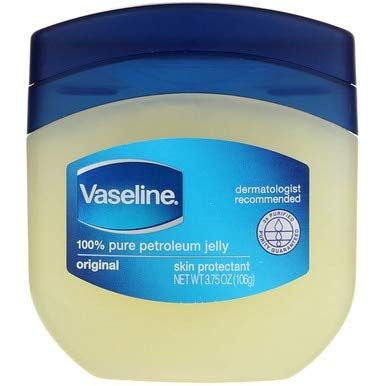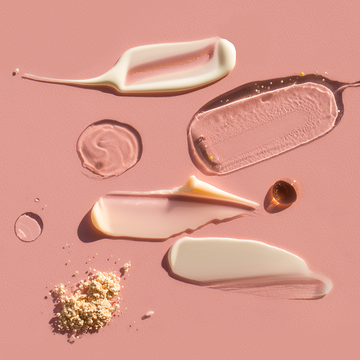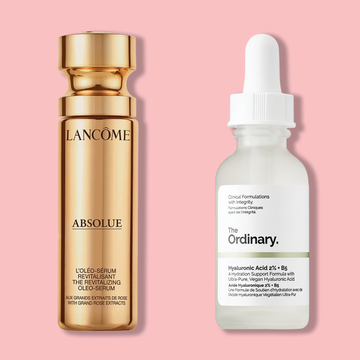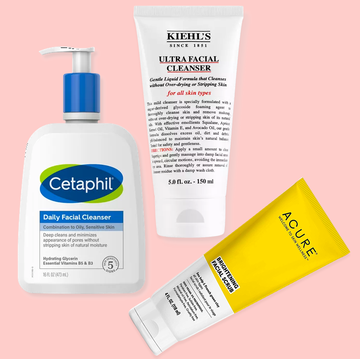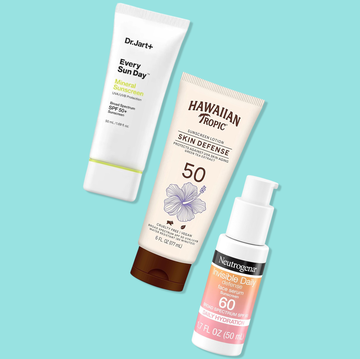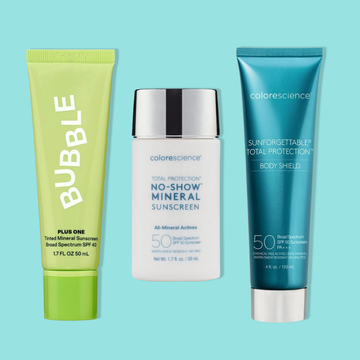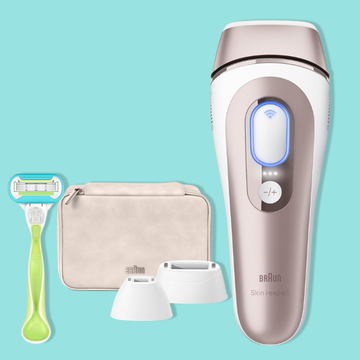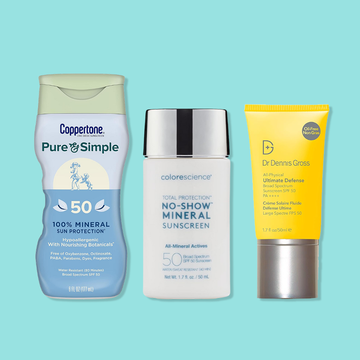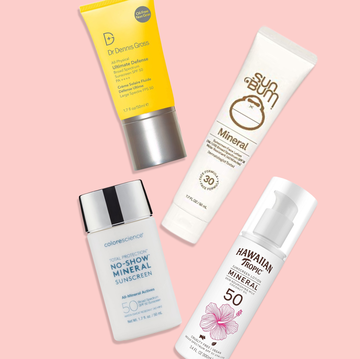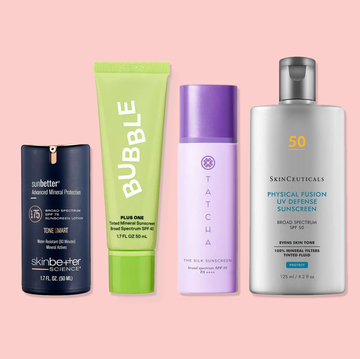You probably had a giant tub of Vaseline in your medicine cabinet from the time you were a little kid — with mom slathering the petroleum jelly on burns, dry skin, and even diaper rash. It's no wonder:The balm has been a fixture in the American medicine cabinet since 1865!
But with so many new health and beauty products having hit the market since then, you might be thinking: Do I really need this old-school stuff? The short answer, yes! It’s a super-inexpensive product that does so much more than you probably think. Before we share some who-knew ways to use petroleum jelly, let’s clear a few things up:
What is petroleum jelly?
Petroleum jelly was first discovered as a by-product forming on oil rigs in the mid-1800s. A chemist, who later opened the first Vaseline factory, worked on refining the substance to be a topical solution. But before it's refined, petroleum jelly does include carcinogenic compounds — a.k.a. stuff that could cause cancer. Yes, the big C. And this is why petroleum jelly has lost some of its luster in more recent years, and become the center of a hot debate.
Does petroleum jelly cause cancer?
We checked in with multiple dermatologists to hear their thoughts. Turns out, there's no need to worry about it causing cancer. "There are no clinical studies that demonstrate that the use of petrolatum promotes cancer," says Dr. Marina Peredo, M.D., F.A.A.D. "Today's formulas have been purified and tested and are cleaner and healthier than ever before."
Scott Rackett, M.D. and Nourage Ambassador agrees: "There is no scientific evidence that short-term or long-term use of Vaseline causes cancer or any other health risks." And to put you at even more ease, Rackett says there have been no reported cancer cases on record.
At most, you should be wary if you bought petroleum jelly from a not-so-reputable brand, which may not follow reliable refining practices. The Environmental Working Group regularly reviews branded products like Vaseline (arguably the most popular petroleum jelly) to determine their dangerous effects. Vaseline (which is purified three times) has a current overall hazard ranking of "low," accompanied by a zero risk for cancer and a zero risk for developmental and reproductive toxicity.
How does petroleum jelly work?
An excellent skin protectant, 100% petrolatum is the most effective occlusive and great for dry, cracked skin or lips. “It creates a barrier on skin to protect compromised skin and prevent water loss,” explains Good Housekeeping Institute Beauty Lab chemist, Danusia Wnek.
What is the difference between Vaseline and Aquaphor?
You’ve likely already heard of two petroleum-based products: Vaseline and Aquaphor. According to Rackett, Vaseline is one of the most effective and cheapest skin salves around. People have been using it for decades to treat everything from cracked skin to diaper rash. Dermatologists especially love it because "the allergy risk is low, and it's more effective at treating and preventing dry skin than creams and lotions," he says.
“Unlike Vaseline, which is 100% petrolatum, Aquaphor Healing Ointment also contains other moisturizing ingredients like mineral oil, panthenol, and glycerin to create a less tacky texture," says Wnek.
A Lab favorite and GH Seal star, Aquaphor is a clinically-proven healer that works by forming a barrier on skin (like Vaseline) to lock in moisture, plus its active ingredients hydrate. (That’s where the two products differ.) Our Beauty Lab pros trust this top formula to soothe dry and cracked lips, skin and cuticles — all without clogging pores.
What else can Vaseline be used for?
The time you should stop using petroleum jelly is if it causes a breakout. "Even though Vaseline is considered non-comedogenic, it's best to avoid use on the face if you are at all acne-prone," explains Rackett. Wnek agrees, saying, "The downside to petrolatum is that it can feel heavy, tacky, and greasy. So you may want to avoid using it on the face — especially if you have oily skin."
No matter which product you opt for, here are some unexpected ways to use petroleum jelly in your beauty routine (plus, a few fun extras!):
1. Remove eye makeup
In a pinch, you can take off your eye makeup with Vaseline, then smooth any excess into the dry skin around your eyes. Just be careful not to get any in your eyes.
2. Exfoliate lips
Simply add a bit of sugar to petroleum jelly and apply it to your lips. Rubbing them together for a few seconds will remove any flaky skin. Then, rinse off the sweet exfoliator and add a thin layer of just petroleum jelly to your lips to moisturize them.
3. Tame your eyebrows
Forgot your trusty brow product? Or want a more natural look? Swap your colored product for the clear jelly. Use your finger or a disposable spoolie brush to smooth a little product over your brow hairs.
4. Try as a DIY highlighter
Get the dewy look for way less. Apply a little product on your cheekbones, and glow on.
5. Perfect at-home manicures
Before you paint your nails, apply Vaseline around your cuticles. The product will act as a roadblock, so if you make any mistakes, the polish won't stick.
6. Protect skin when you dye your hair
If you're an avid user of boxed hair dyes, you know it's tricky to avoid getting dye on your skin. Spread the balm right along your hairline, the tops of your ears and the back of your neck to create a layer of protection before application. Not only does it make clean up a breeze, but you'll avoid getting color all over you skin.
7. Soothe cracked heels
Sandals season is fast-approaching. If your feet need a little TLC before showing them off. Rub some Vaseline on dry, cracked heels before bed, then slip on a pair of socks and snooze.
8. Prevent thigh chafing
Runners, athletes, or anyone who strolls a lot in hot, sticky weather, knows that chaffing can be a painful way to ruin a nice day. The American Academy of Dermatology recommends using petroleum jelly as an inexpensive way to prevent irritation. Spread a small amount of the product on vulnerable areas — like between your inner-thighs or under your armpits — for instant relief.
9. Make perfume last longer
Dab small amounts of Vaseline on your pulse points — your wrists, behind your ears, behind your knees, and even on your ankles — before you spray on your favorite fragrance. The Vaseline absorbs the scent for a more lasting effect.
10. Save your dry cuticles
Even if you're not using petroleum jelly as an all-over skin moisturizer, you might want to dab some on your cuticles each night. It can keep you from developing cracked, dry fingertips.
11. Create lush lashes
If you're running low on your fave mascara, Vaseline is an easy alternative. Brush on a small amount of the jelly to make your lashes pop.
12. Rescue broken makeup
This is a tip from GH chief technologist, Rachel Rothman: “Just the other day, when my Physicians Formula blush compact broke, I mixed the remains in a jar with a squirt of Aquaphor to create a cream blush, which I now dab onto my cheeks in the mornings.”
13. Open nail polish bottle with ease
Using a cotton swab and a small dab of Vaseline, spread the jelly inside your nail polish cap. The Vaseline will prevent the nail polish from sealing the lid shut, which makes it easier to remove it the next time you want to paint your nails.
14. Prevent Swimmer's Ear
Vaseline could also save your ears if you swim a lot. Dip a little on a cotton ball and then mold the cotton ball into each ear before you dive into the water. This keeps any unwanted moisture out.
15. Refresh scuffed shoes
A bit of Vaseline on a soft cloth will polish up dull or scuffed patent leather shoes; simply buff well and shine on—no more messy rags and shoe polish.

Nicole Saporita was an editor and writer at Good Housekeeping from 2014 to 2020, where she researched, wrote and reported original content for the Good Housekeeping Institute and several other departments, including health, travel and family.


